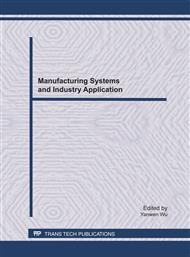p.382
p.386
p.393
p.398
p.404
p.410
p.414
p.422
p.427
The Filling Algorithm for Scanning Based on the Chain Structure
Abstract:
By using the thought of Bresenham algorithm for drawing a line, it can generate basic graphics, at the same time it can create a regional point of scanning lines. According to the regional point of scanning lines it can be filled directly. It does not judge and calculate of the other pixels within the region. The time complexity of the algorithm has been markedly improved, at the same time, in the process of filling a polygon it only stores the coordinates of boundary points and the coordinates of regional points, and it does not store other pixels within the region. It only needs a small storage space, so its space complexity is also increased.
Info:
Periodical:
Pages:
404-409
Citation:
Online since:
June 2011
Authors:
Keywords:
Price:
Сopyright:
© 2011 Trans Tech Publications Ltd. All Rights Reserved
Share:
Citation:


